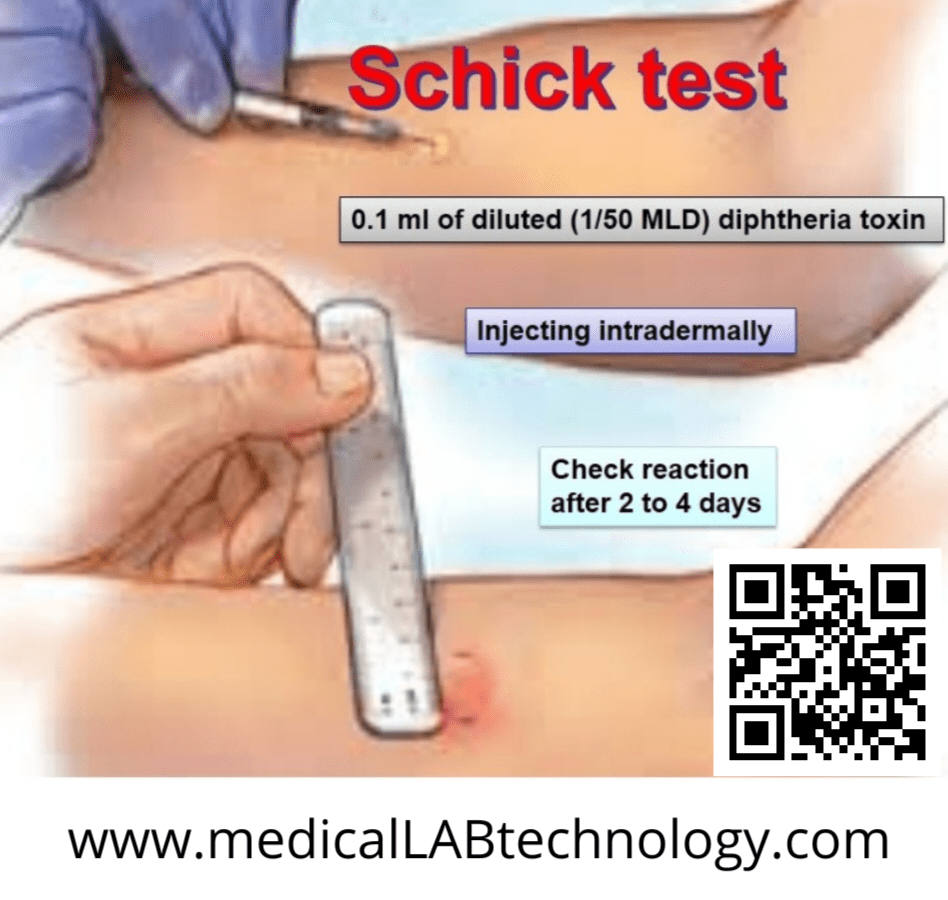The Schick test is a diagnostic tool used to determine an individual’s immune status against diphtheria toxin.
Schick test principle
The test involves injecting a small amount of inactivated diphtheria toxin just below the surface of the skin, usually on the forearm.

If the individual has sufficient levels of antibodies against the toxin, there will be no reaction at the injection site. This indicates that the individual is immune to diphtheria.
On the other side, if the person lacks sufficient antibodies, they will develop a localized reaction at the injection site within 48 to 72 hours.
Schick test procedure
- One Schick test dose of the toxin is injected intradermally in one forearm and the same amount of heated toxin is injected into the other forearm as a control.
- The test is read three times, at 24 hours, 72 hours and then at 6 days. In a positive reaction, there is redness and swelling which increases for several days and then fades away.
- The control arm does not show any reaction.
- In the case positive schick test, there is not enough anti-toxin in the blood and such individuals are susceptible to diphtheria.
- In a negative reaction, there is no reaction on either of the arms. Such an individual has an adequate level of anti-toxin in the serum and so is immune to diphtheria.
- In the case of Pseudo reaction due to hypersensitivity to materials rather than the toxin in the injection, there is redness and swelling in both arms that disappears on both arms within 2-3 days. It is considered as negative Schick test.
- In a combined reaction, a combination of a pseudo-reaction and a positive reaction occurs. In this, redness and swelling appear in both of the arms but in the control arm redness disappears in 2-3 days while in the other arm the reaction continues as in a positive reaction.
- In this the individual is hypersensitive to the material of the injection as well as susceptible to the diphtheria toxin.